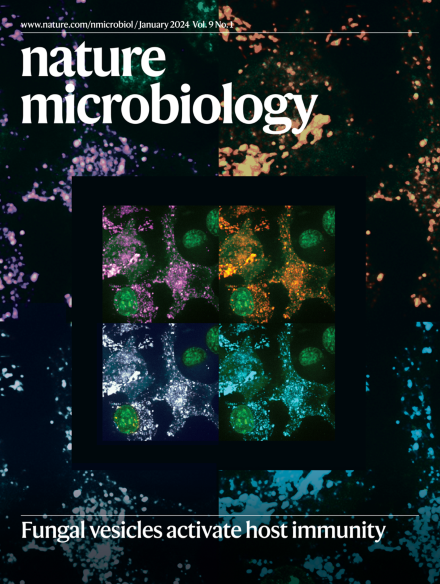一种检测质粒共轭转移序列起源的方法
IF 20.5
1区 生物学
Q1 MICROBIOLOGY
引用次数: 0
摘要
过去几十年来,人们对质粒共轭进行了广泛的研究。然而,在大多数质粒中,共轭所需的最小区域(转运起源(oriT)序列)是未知的。通过对已知 oriT 的特征描述,我们开发出了一种有效的方法来识别细菌质粒中具有新型 oriT 家族的基因组区域。本文章由计算机程序翻译,如有差异,请以英文原文为准。


A method to detect origin of transfer sequences for plasmid conjugation
Plasmid conjugation has been extensively studied over the past decades. Yet, in most plasmids, the minimal region required for conjugation (the origin of transfer (oriT) sequence) is unknown. The characterization of known oriTs enabled the development of a validated method to identify genomic regions with novel families of oriTs across bacterial plasmids.
求助全文
通过发布文献求助,成功后即可免费获取论文全文。
去求助
来源期刊

Nature Microbiology
Immunology and Microbiology-Microbiology
CiteScore
44.40
自引率
1.10%
发文量
226
期刊介绍:
Nature Microbiology aims to cover a comprehensive range of topics related to microorganisms. This includes:
Evolution: The journal is interested in exploring the evolutionary aspects of microorganisms. This may include research on their genetic diversity, adaptation, and speciation over time.
Physiology and cell biology: Nature Microbiology seeks to understand the functions and characteristics of microorganisms at the cellular and physiological levels. This may involve studying their metabolism, growth patterns, and cellular processes.
Interactions: The journal focuses on the interactions microorganisms have with each other, as well as their interactions with hosts or the environment. This encompasses investigations into microbial communities, symbiotic relationships, and microbial responses to different environments.
Societal significance: Nature Microbiology recognizes the societal impact of microorganisms and welcomes studies that explore their practical applications. This may include research on microbial diseases, biotechnology, or environmental remediation.
In summary, Nature Microbiology is interested in research related to the evolution, physiology and cell biology of microorganisms, their interactions, and their societal relevance.
 求助内容:
求助内容: 应助结果提醒方式:
应助结果提醒方式:


